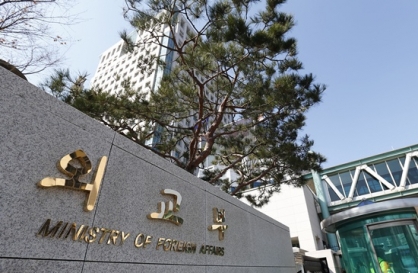‘Temple food heals you’
Monk promotes temple food to the world
By Korea HeraldPublished : Oct. 31, 2012 - 20:03
It hasn’t been long since the mysterious lives of monks at Buddhist temples were unveiled ever so slightly to the outside world.
But thanks to the public’s increasing appetite to go greener, fresher and humbler, the essence of temple food, food cooked for monks, has captured greater attention than ever before.
According to the Korea Food Service Institute, temple food contains equal amounts of calories and high-quality protein as regular food but contains low levels of saturated fat. It also has abundant calcium, iron and fiber.
“Temple food is the epitome of Buddhist culture,” said Venerable Jeokmun, head of the Korean Temple Food Institute and the head of Sudo Temple in Pyeongtaek, Gyeonggi Province.
But thanks to the public’s increasing appetite to go greener, fresher and humbler, the essence of temple food, food cooked for monks, has captured greater attention than ever before.
According to the Korea Food Service Institute, temple food contains equal amounts of calories and high-quality protein as regular food but contains low levels of saturated fat. It also has abundant calcium, iron and fiber.
“Temple food is the epitome of Buddhist culture,” said Venerable Jeokmun, head of the Korean Temple Food Institute and the head of Sudo Temple in Pyeongtaek, Gyeonggi Province.

Jeokmun, who has been engaged in the world of temple food for more than two decades and has mastered more than 100 recipes, said the philosophy of temple food is now attracting people tired of artificial colors and flavorings.
“Temple food is all natural and is well balanced nutritionally. It is for people and made by people but respects the whole ecosystem,” he said.
He explained that temple food consists of six flavors instead of the conventional five ― sweet, savory, spicy, sour and bitter.
“There’s the light and cleanness, which is unique. The foods may seem very unfamiliar at first because we do not use too much spice or blend in too many flavors and aromas in one dish. Still, the ‘roughness’ and humbleness of the food keeps attracting the people,” he said.
Temple food has several characteristics to make it stand out among modern cuisine.
First is the three principles of being clean, soft and “following the rules.”
“For over 17 centuries, we have used natural ingredients grown by natural water and wind. We do not use preservatives or additives. We do not use too much spice that would blow away the natural flavors,” Jeokmun said.
Second is the prohibition of “stimulating” ingredients.
“Since monks are celibate, they refrain from using ingredients that could stimulate your emotions or trigger any physical reactions. We do not eat five spicy herbs which are garlic, leek, chives, wild chives and hingu. Hingu does not grow in Korea,” he said.
The elimination of such ingredients makes the food even more mild, consolidating the reputation of Buddhist food, he added.
Third is the traditionally believed medicinal effect. “Dongeuibogam,” the country’s oldest medical and medicinal book, claims that temple food helps balance the energy flow and blood circulation by purifying the blood.
“We believe all types of food have influence on the human body. Many vegetables have medicinal properties so we do not kill their original flavors,” the monk said. “For instance, bitterness stimulates the function of the heart. Therefore, don’t kill off a good thing by using too much sauce in order to sweeten it.”
The use of different ingredients creates synergies ― the use of mushrooms and onion not only enhances the flavors but also boosts the anti-cancer effect, among others, he claimed. On the other hand, some combinations can create side effects.
“We don’t put cucumbers with radishes because the clash of the cold characteristics of the two vegetables could cause trouble,” the monk explained.
Even after the long hours of painstaking selection and cooking, serving is another stage of consideration.
“Do not try to press them so you can stack more. Allow some air to get between the vegetables so that picking them up with chopsticks will be easy. It also gives us an opportunity to thank the vegetable which is part of the nature but which allowed us to eat it,” he said.
“Every day we thank nature for giving us the food we eat. We try to show our respect by eating food in its most natural state as is possible. But at the same time, the food is delicious to eat. Once you get used to it, you will understand what you have missed in your busy lives,” Jeokmun said.
By Bae Ji-sook (baejisook@heraldcorp.com)
-
Articles by Korea Herald




![[Weekender] Korean psyche untangled: Musok](http://res.heraldm.com/phpwas/restmb_idxmake.php?idx=644&simg=/content/image/2024/05/02/20240502050841_0.jpg&u=)

![[Eye Interview] 'If you live to 100, you might as well be happy,' says 88-year-old bestselling essayist](http://res.heraldm.com/phpwas/restmb_idxmake.php?idx=644&simg=/content/image/2024/05/03/20240503050674_0.jpg&u=)











![[Herald Interview] Director of 'Goodbye Earth' aimed to ask how we would face apocalypse](http://res.heraldm.com/phpwas/restmb_idxmake.php?idx=652&simg=/content/image/2024/05/03/20240503050732_0.jpg&u=)
